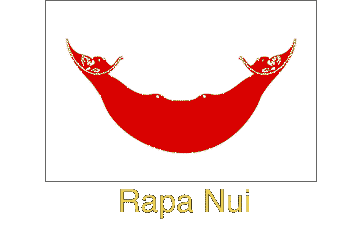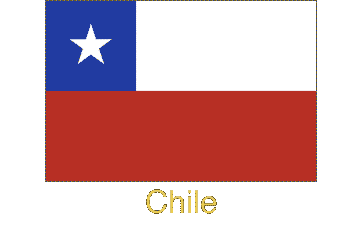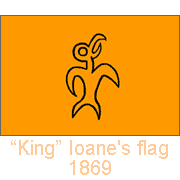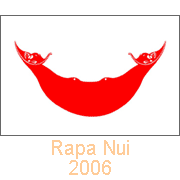Flags from Rapa Nui (Easter Island)


A Flag history of Rapa Nui
Easter Island is reported to have first flown a flag in the 19th century, displaying four black “Tangata manu” (Birdman) figures at each corner, but no illustration seems to exist. There was also a standard, “Te-reva”, displaying various Polynesian symbols and objects. In 1867 a French mariner, Jean-Onésime Dutrou-Bornier, settled on the island and married a woman who was the last heiress of the kings of Easter Island. Some of the islanders then recognised him as King Ioane I, and he hoisted a flag, depicting the outline of a Manu Tara Bird (sooty tern), the source of the Bird Man Cult, on an orange field. He had asked France in vain to make Easter Island a Protectorate, and he died in 1876. His “kingdom” and flag were never recognised.
you may then send it as a postcard if you wish.
In 1888 Easter Island was annexed by Chile and the Chilean flag was hoisted. The flag has two equal horizontal bands of white and red, with a blue square the same height as the white band in the canton, bearing a white five-pointed star in the centre. The star may represent a guide to progress and honour while other interpretations refer to its reference to an independent state; blue symbolises the sky and the Pacific Ocean, white is for the snow-covered Andes, and red stands for the blood spilled to achieve independence. The flag was adopted on 18 October 1817.
On 9 May 2006, a flag of Rapa Nui was adopted. It is white, with a red reimiro (a wooden pectoral ornament once worn by the people of Rapa Nui) in the centre. Both men and women wore the rei miro. It served as a symbol of high rank, and the paramount chief of the island was said to have worn two of them as pectorals and two others on his shoulders on special occasions. The crescent shape may refer to the moon, an association found throughout Polynesia. The significance of the heads is unknown, though they may relate to ancestors. A Coat of Arms displays, in gold on a white background, the legendary Manu Tara Bird, (sooty tern, Onychoprion fuscatus), the source of the Bird Man Cult and still the most sacred animal and symbol on the island. This Coat of Arms is also displayed on the administrative flag of the Municipality of Easter Island (Isla de Pascua).




